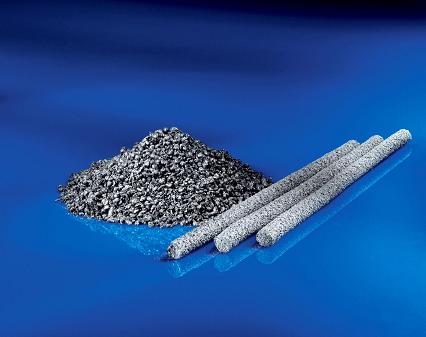Scientists have succeeded in creating plastics capable of conducting electricity and at the same time reducing their production costs

Plastic that conducts electricity and metals that weigh as much as a feather? It sounds like a completely different world. Despite this, scientists managed to create plastics capable of conducting electricity and at the same time reduced their production costs.
Plastic is a light-weight and cheap material, but it insulates electric current. Metal is a flexible material that conducts electricity, but also expensive and heavy. Until today, it was not possible to combine the properties of these two different materials. However, researchers from the University of Bremen (Bremen) in Germany have developed a solution that combines the advantages of both materials without any need for new equipment to prepare the new components.
The biggest challenge for the researchers was to make the plastic conduct electricity, although the use of plastic-metal composite materials exists in many places where printed circuits are embedded in plastic components, for example, in cars or airplanes. Until now, this has only been possible through an indirect way of punching and bending metal sheets in a complex process in order to incorporate them into the plastic component.
The new solution is simpler: composite material. [From Wikipedia: "A composite material is an engineering structure made of several different materials that have specific functions in the structures. The materials that make up the composite material have significantly different physical or chemical properties, in order to produce a material with the desired properties. The different materials remain separated even after the composite material is created and can be seen even without a microscope in the finished product.
The main advantage of the composite materials is a high stiffness-to-weight ratio and good resistance at high temperature. The composite material is the only one in which the designer is given the possibility to determine the properties of the material in advance. The most common use of composite materials is as a polymer in which fibers are absorbed.
An example of a composite material is concrete. A common problem in composite materials is that due to the dispersion of the fibers as the material in all directions, creating a local defect can have an effect on the properties of the entire material."]. The separate materials are not only mixed together or purely combined with each other, but are mixed in a unique process to create one material. This process produces a uniform electrically conductive network. The resulting material has the desired chemical stability, is light-weight and also contains the electrical and thermal conductivity properties typical of metals. Since it will no longer be necessary in the future to embed metallic circuits in plastic panels and the integrated material can be easily produced in a single industrial step, the production costs of the new material will be significantly reduced.
The automotive and aircraft industries will be the ones to benefit the most from this new development. For example, the headlight housings in cars are made of hard plastic. Until today, metal sheets had to be embedded in plastic to operate the lights. If these products in the car were equipped with printed panels consisting of the composite conductive plastic-metal material, they could be produced more efficiently and at a lower cost than ever before. Many components in airplanes, such as the airframe are partly composed of carbon fiber composites (CFC). However, they lack the ability to conduct electricity. A lightning strike, hit in this part of the plane, could lead to fatal consequences. A plastic-metal composite material could be an adequate alternative to the non-hazardous dispersion of such an option.

3 תגובות
a question:
Because of the current the plastic does not heat up?
Doesn't this hurt him?
This has implications for all areas! Wherever plastic is used in combination with metals, it will be possible to use the new development.
Does this also have consequences for household products?